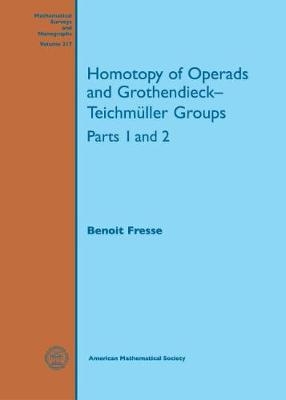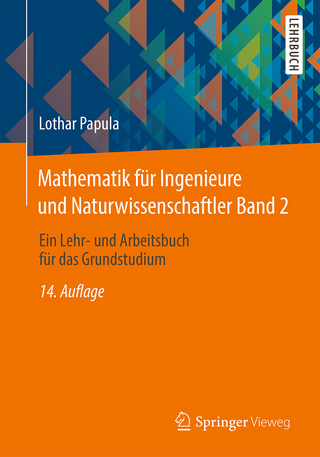
Homotopy of Operads and Grothendieck-Teichmuller Groups
American Mathematical Society (Verlag)
978-1-4704-3480-9 (ISBN)
Benoit Fresse, Universite de Lille 1, Villeneuve d'Ascq, France.
Contents for Part 1:
From operads to Grothendieck-Teichmuller groups. The general theory of operads: The basic concepts of the theory of operads
The definition of operadic composition structures revisited
Symmetric monoidal categories and operads
Braids and $E_n$-operads: The little discs model of $E_n$-operads
Braids and the recognition of $E_2$-operads
The magma and parenthesized braid operators
Hopf algebras and the Malcev completion: Hopf algebras
The Malcev completion for groups
The Malcev completion for groupoids and operads
The operadic definition of the Grothendieck-Teichmuller group: The Malcev completion of the braid operads and Drinfeld's associators
The Grothendieck-Teichmuller group
A glimpse at the Grothendieck program
Appendices: Trees and the construction of free operads
The cotriple resolution of operads
Glossary of notation
Bibliography
Index
Contents for Part 2:
Homotopy theory and its applications to operads. General methods of homotopy theory: Model categories and homotopy theory
Mapping spaces and simplicial model categories
Simplicial structures and mapping spaces in general model categories
Cofibrantly generated model categories
Modules, algebras, and the rational homotopy of spaces: Differential graded modules, simplicial modules, and cosimplicial modules
Differential graded algebras, simplicial algebras, and cosimplicial algebras
Models for the rational homotopy of spaces
The (rational) homotopy of operads: The model category of operads in simplicial sets
The homotopy theory of (Hopf) cooperads
Models for the rational homotopy of (non-unitary) operads
The homotopy theory of (Hopf) $/Lambda$-cooperads
Models for the rational homotopy of unitary operads
Applications of the rational homotopy to $E_n$-operads: Complete Lie algebras and rational models of classifying spaces
Formality and rational models of $E_n$-operads
The computation of homotopy automorphism spaces of operads: Introduction to the results of the computations for the $E_n$-operads
The applications of homotopy spectral sequences: Homotopy spsectral sequences and mapping spaces of operads
Applications of the cotriple cohomology of operads
Applications of the Koszul duality of operads
The case of $E_n$-operads: The applications of the Koszul duality for $E_n$-operads
The interpretation of the result of the spectral sequence in the case of $E_2$-operads
Conclusion: A survey of further research on operadic mapping spaces and their applications: Graph complexes and $E_n$-operads
From $E_n$-operads to embedding spaces
Appendices: Cofree cooperads and the bar duality of operads
Glossary of notation
Bibliography
Index
| Erscheinungsdatum | 05.07.2017 |
|---|---|
| Reihe/Serie | Mathematical Surveys and Monographs |
| Verlagsort | Providence |
| Sprache | englisch |
| Maße | 178 x 254 mm |
| Gewicht | 2620 g |
| Themenwelt | Mathematik / Informatik ► Mathematik ► Algebra |
| Mathematik / Informatik ► Mathematik ► Geometrie / Topologie | |
| ISBN-10 | 1-4704-3480-6 / 1470434806 |
| ISBN-13 | 978-1-4704-3480-9 / 9781470434809 |
| Zustand | Neuware |
| Haben Sie eine Frage zum Produkt? |
aus dem Bereich


